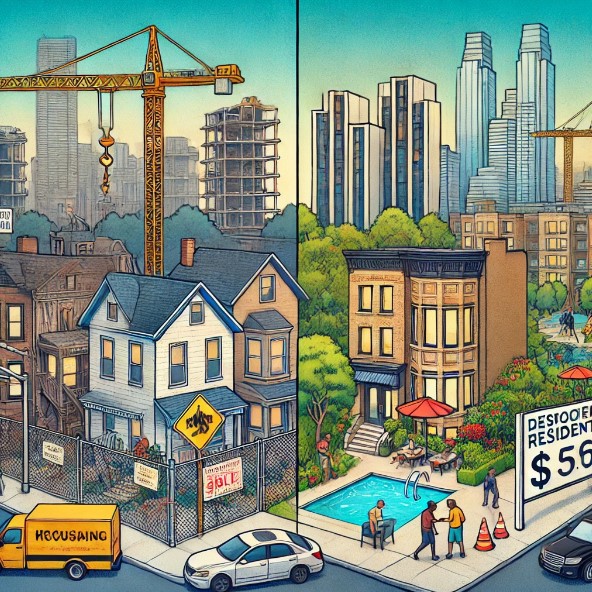
Renovation and revitalization projects can have a profound impact on housing supply and affordability in various ways. While these projects often aim to modernize and improve living spaces, they also tend to influence market dynamics:
- Impact on Housing Supply:
- Temporary Reduction: During major renovation or revitalization projects, properties may be temporarily taken off the market, reducing the available housing supply. This can increase competition for remaining units, particularly in tight markets.
- Increase in Quality Supply: Once revitalization projects are complete, they can add modernized, high-quality housing units to the market, which may attract new buyers or renters.
- Gentrification: In areas undergoing significant revitalization, improved amenities and property values can attract higher-income residents, sometimes displacing lower-income communities. This phenomenon can result in a shift in the type of housing available, with more luxury options becoming dominant.
- Affordability Challenges:
- Increased Costs: Renovated or revitalized properties tend to command higher prices, both in terms of sale and rent. While they offer modern amenities and upgraded conditions, they may be out of reach for lower- and middle-income individuals.
- Displacement: As older, affordable housing is revitalized or renovated into more upscale units, residents in these areas may face displacement due to rising rents or property values, reducing affordable housing options.
- Taxation and Fees: As property values rise due to revitalization, property taxes and condo fees may increase, further adding to the cost burden on residents.
